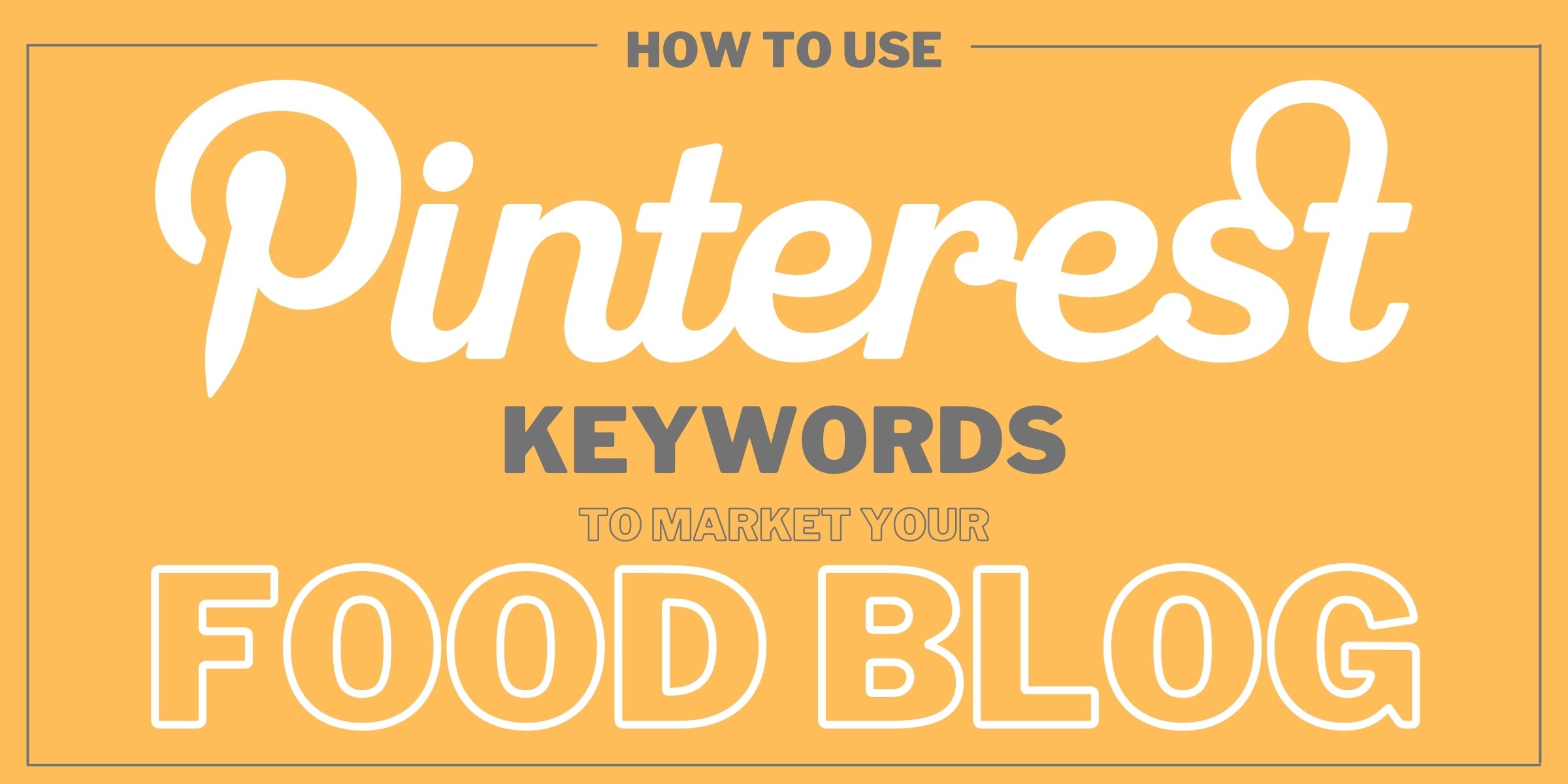Pinterest Keyword Research
This Pinterest Keyword Research: Grow Your Blog Traffic by Learning How to Add Keywords to Pinterest post includes affiliate links. When I find a great product or service, I like to share it with my readers. Sometimes I use affiliate links so I can earn a commission for my recommendations. Thank you for your support!
Updated: July 16, 2021
Grow Your Blog Traffic by Learning How to Add Keywords to Pinterest
Did you know that Pinterest is one of the most effective ways to drive traffic to your blog? In this blog post, I discuss in detail how to use keywords to market your blog. I’ll cover how to choose effective keywords and to how to include them in your Pinterest bio, boards & Pins.
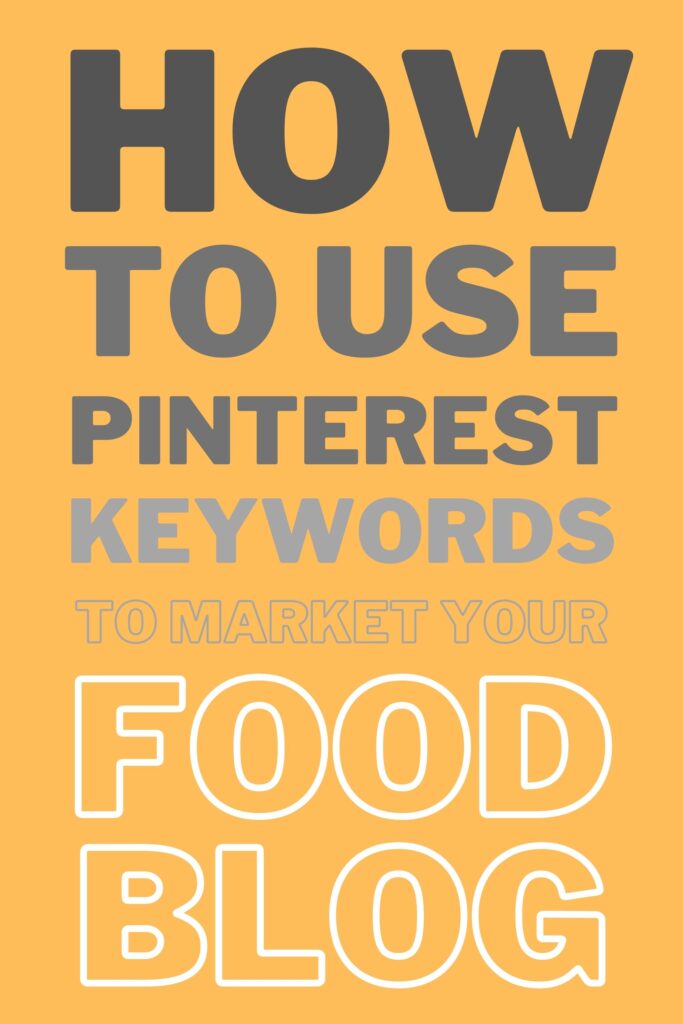
Note: This How to Add Keywords to Pinterest Tutorial is written in the context of promoting a food blog. However, the Pinterest marketing strategies and Pinterest keyword research tools provided herein are applicable across the board.
What is Pinterest?
Okay. okay. Don’t let the simplicity of this question trick you into thinking that this is just Pinterest strategy for beginners.
Even if you’re not new to Pinterest, taking a step back and understanding what Pinterest is, who it serves and how it serves them, is really helpful to understanding how to add keywords to Pinterest. Because Pinterest is different things to different people, depending on how they use it.
Pinterest from the User’s Point of View
Most Pinterest users know it as an image-sharing and social-media service. For the Pinterest user, it is a resource for planning their dream wedding, organizing their closet or (my favorite) making the perfect recipe. It’s highly inspirational. By typing a simple description, like beginner vegan recipes into Pinterest’s search bar, Pinterest users can generate pages and pages of vegan recipes specifically designed for a beginner chef.
Pinterest users can then save and organize the Pins that they find on to self-created Pinterest boards. These boards can then be shared with others or used for later reference. To use the example above, a new vegan chef might want to create a Pinterest board called Beginner Vegan Recipes to refer to when planning his or her grocery list or meal plan for the week.
Pinterest from the Creator’s Point of View
For the content creator though, Pinterest should be viewed as the tool connecting a Pinterest user to the content creator’s content. Pinterest content creators should be viewing Pinterest as a robust search engine.
If you’re not familiar with how search engines work, they’re essentially indexes of information found on the Internet. Search engines “crawl” the Internet and categorize the information they find in accordance with proprietary algorithms that they develop.
A search engine’s end game is to deliver a user the content most likely to satisfy them. If successful, that user will continue to rely on that search engine. As a content creator, your job is to help the search engine best understand exactly what it is that you have to offer so that it can deliver high-quality, targeted content to its users.
A Good Marketing Strategy Includes Pinterest
I’ve had my share of ups and downs with Pinterest, but I can’t deny that it’s the best social media platform out there for promoting my food blog. Here are three reasons why:

The Advantage of Image Results
Pinterest, unlike Google (perhaps the most well-known search engine), delivers its results exclusively as images and videos. This is hugely significant because searchers often react more positively to images than they do text. As a food blogger, the ability to showcase your work at a glance is very powerful.

For example, Pinterest is by far the biggest driver of traffic to my food blog. In the month before I wrote this blog post 70% of my blog traffic came from social media. Of that 70%, 74% came from Pinterest while 18% came from Instagram. Pinterest and Instagram are the two social media channels that I actively use.
Efficiency & Long-Lasting Content
These simple stats show that Pinterest is a good marketing tool for my food blog, but there’s another layer to this story.
Efficiency.

I spend considerably less time a month on Pinterest than I do on Instagram, making Pinterest’s return-on-investment that much greater. It gives me more time to create new content. Pinterest content also has a longer shelf-life than an Instagram post. Unlike Instagram posts, Facebook posts and Tweets, which rapidly fall from view, Pinterest content continues to live on.
The Power of Direct Links
Further, unlike other image-sharing channels like Instagram, Pinterest allows content creators to include a link back to their blog. There are no extra steps along the way, like reading through captions to find a link, relying on a story that expires in 24 hours, or retracing steps to a bio to find a website link.
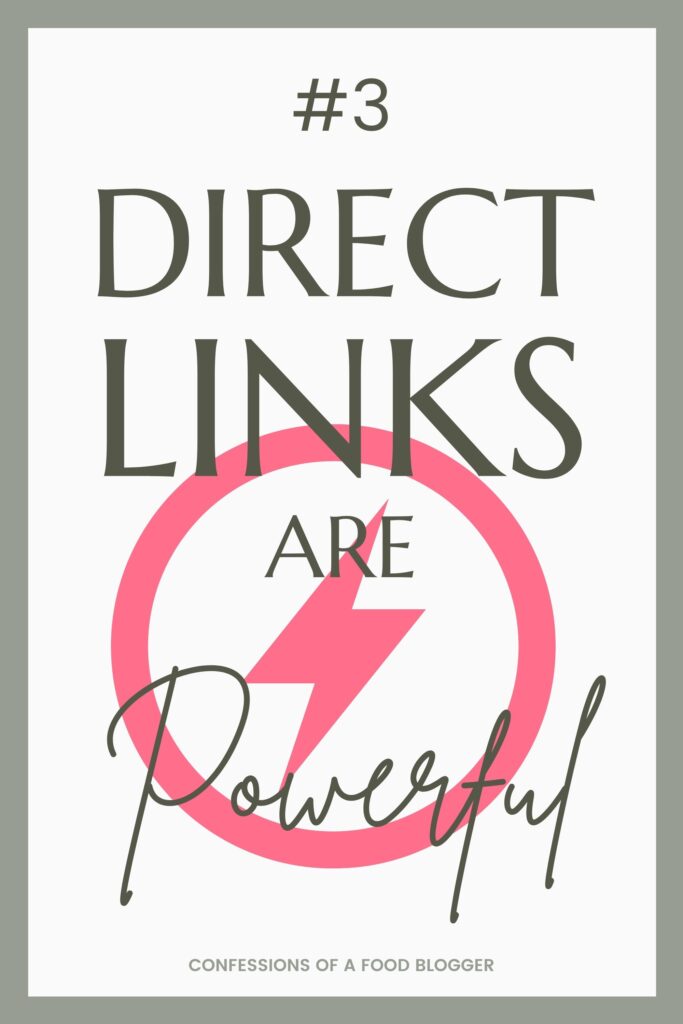
As a food blogger, I have it even better on Pinterest than that though. Through the use of Rich Pins, I can share a portion of one of my recipes (usually the ingredients and a the first couple of steps) with the user. If the recipe fits the Pinterest user’s needs, they can go directly to my blog for the rest. It’s a simple one-click process for the Pinterest user and it’s great for me because that Pinterest user might also sign up for my newsletter, find some other recipes to try or perhaps purchase some of my recommended kitchen gadgets.
Developing Your Pinterest Marketing Strategy Through Pinterest Keyword Research
Now that you know why to use Pinterest to market your food blog, let’s talk about how to use Pinterest to market your food blog.
How do you create a presence that Pinterest recognizes as valuable to the end user? After all, I said that a simple search for Beginner Vegan Recipes returns pages and pages of results. What does it take to get to the top?
It all starts with keywords. Keywords are the connection between your content and the user’s requested information. Choosing the right keywords and using them effectively in the content you produce is very important.
The Anatomy of Pinterest
Before we start talking about how to choose the right keywords for Pinterest, let’s discuss how Pinterest is structured. Different keywords and key phrases will be better suited for different Pinterest parts.
When you create a Pinterest account, you’ll have a few key areas where you’ll include text that will help Pinterest understand what it is you’re about. These include:
- Your Pinterest bio
- Pinterest boards; including titles & descriptions; and
- Individual Pinterest Pins; including Pin titles, descriptions
& hashtags

Pinterest marketing strategies used to include adding 5-7 hashtags to the end of each Pinterest Pin description. As of 2021, Pinterest no longer puts an emphasis on hashtags. Use the space to include effective keywords in your descriptions instead.
Your Pinterest bio is a high level description of your Pinterest presence. It’s like the elevator pitch for your Pinterest account. It needs to be short, sweet and to-the-point, as Pinterest only allows 160 characters. Broad keywords that serve as an overview of your Pinterest presence tend to work best. Hint: keep reading…broad, but not too broad is the key.
Boards are similar to chapters in a book. They’re used to collect like-kind information. For example, if you’re a baker, you might organize your recipes by breads, cookies, cakes and pastries. At this stage, keywords start to get a little more specific.
Individual Pins are added to boards and are the most specific of the Pinterest parts. To use the baking example above, a baker would create individual Pins for each bread recipe. So, the bread board might have recipes for sourdough bread, whole wheat bread or sweet bread. In addition, there might also be Pins with topics related to bread, like vegan bread recipes, best bread recipes or quick bread recipes.
Within each Pin, there will be a description that further informs Pinterest of the Pin’s content. That whole wheat bread? Well, it’s also a healthy, homemade & artisan.
As you can see, Pinterest offers many opportunities to take advantage of keyword research. So — how to determine which keywords to use and when to use them?
Pinterest Keyword Research
Before any writing happens, I spend a lot of time researching keywords. Yes, it’s time-consuming and painful. The good news is that it’s free (at least Pinterest keyword research) and it’s highly effective.
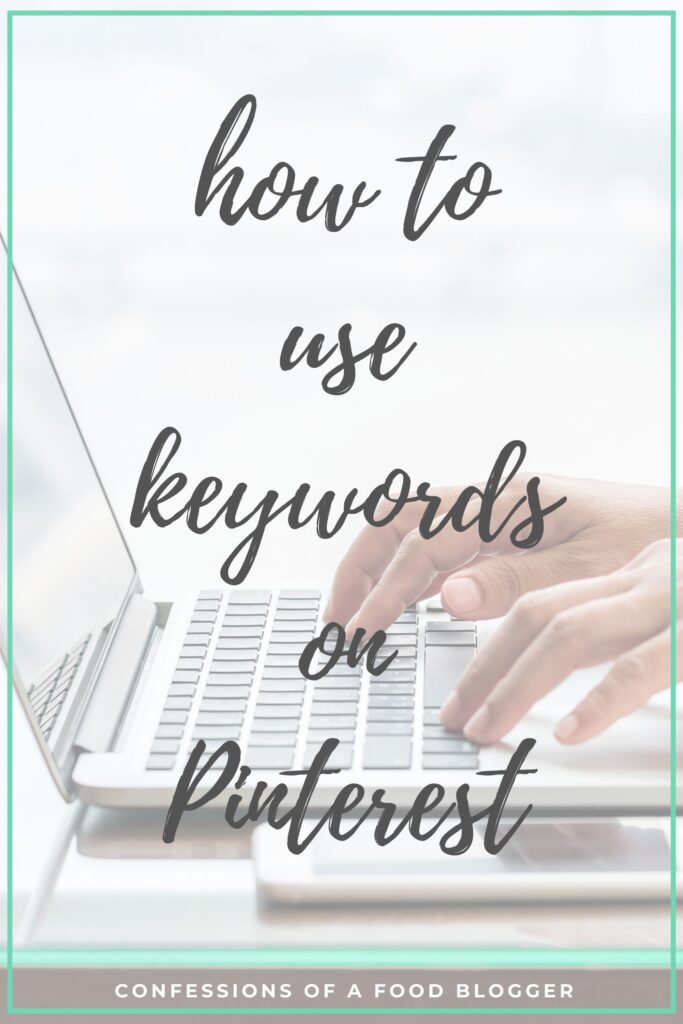
How Pinterest Keyword Research is Different
Pinterest keyword research is a slightly different animal than traditional search engine optimization. This is due to Pinterest’s quasi social media nature. For example, when I research keywords for the purposes of ranking on Google, my focus is different. With traditional SEO research, I’m looking for the SEO Unicorn — that perfect sweet spot of high search volume, but low competition.
When it comes to Pinterest keyword research, I’m definitely interested in popular keywords and key phrases, but I’m not trying to find low competition keywords. In fact, I want to look for trending, competitive keywords that are specific to my niche.
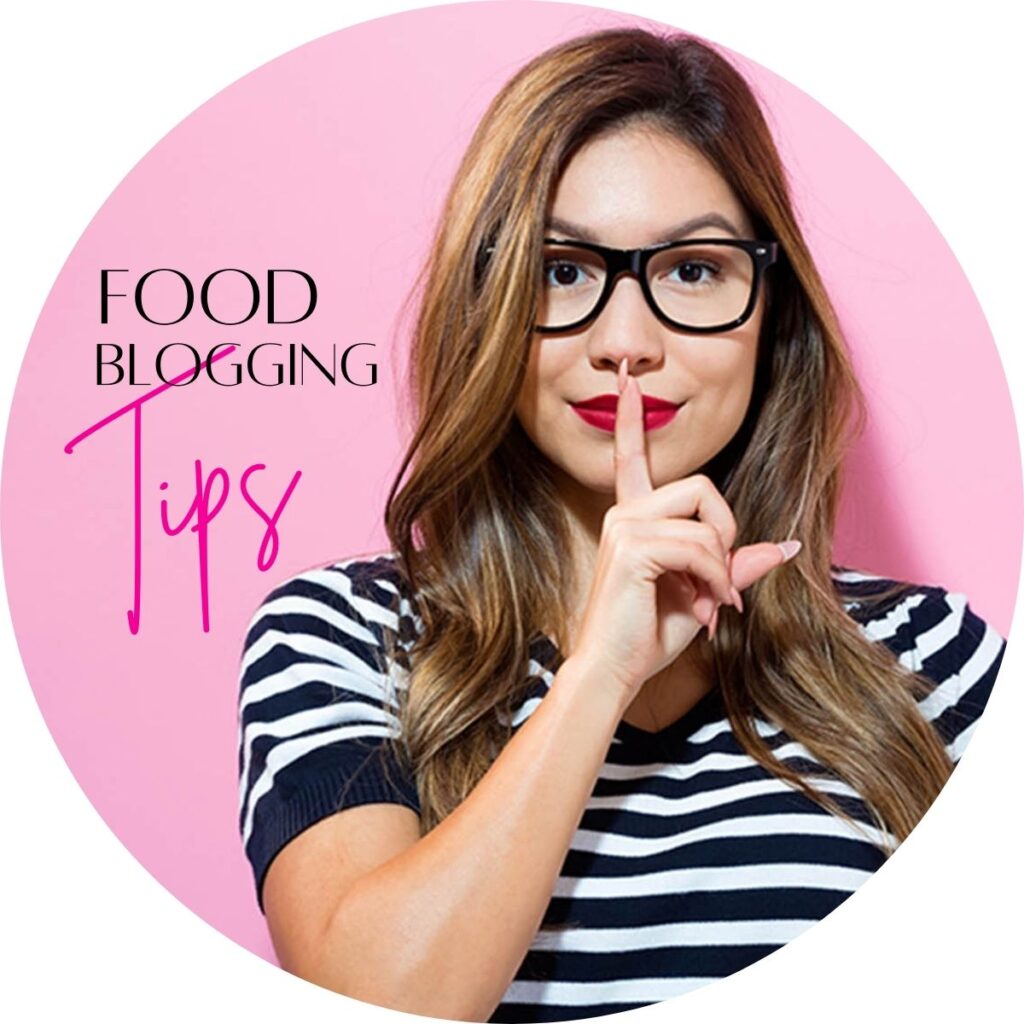
The key phrase is “specific to my niche.” Very broad keywords like “recipes” and “cooking” are widely used. Naturally it will be harder to get any traction if you’re using only broad keywords and key phrases. As you’ll see below, finding your niche is an important part of a Pinterest marketing strategy.
A Pin’s popularity tends to spike and then dip, so timing Pins to seasonal shifts and trends can actually work for you despite increased competition over the same topics. And Pinterest users are different than traditional search engine users — they’ll look beyond the first page. In fact, Pinterest users will tend to scroll for several seconds before selecting a Pin, giving the top 60+ Pins a chance at being selected.
The trick, of course, is getting into that top 60. And the tools, well… that’s where keyword placement comes in. Being strategic about where and how you use keywords can help to set you above the rest.

Pinterest keyword research is only the first half of the battle. It will help you get your Pin into the top 60+ pins, but then the image and text overlay has to do the rest.
How to Conduct Pinterest Keyword Research
Pinterest keyword research is really just developing a list of popular keywords related to your Pin. And, by popular keywords, I mean keywords that are popular on Pinterest itself. So, how do you develop a list?
Pinterest will actually do it for you… if you know where to look.

Note that Pinterest key phrases are typically between 1-3 words and make up short phrases that aren’t necessarily conversational (i.e. soup recipe vegan). This is because Pinterest is an inspirational visual platform and its users typically aren’t trying to satisfy an immediate needs, but to gather ideas.
Google, by contrast, is informational. Google’s users go there for answers to their immediate questions, so search queries tend to be longer and more specific. This is an important thing to remember when creating a list of Pinterest keywords and key phrases.
Finding Keywords to Add to Your List
The first step is to think like a Pinterest user and just conduct a search through Pinterest’s search bar. As you type in your key search terms, Pinterest will provide a list of potential keywords as a drop-down menu below the search bar.
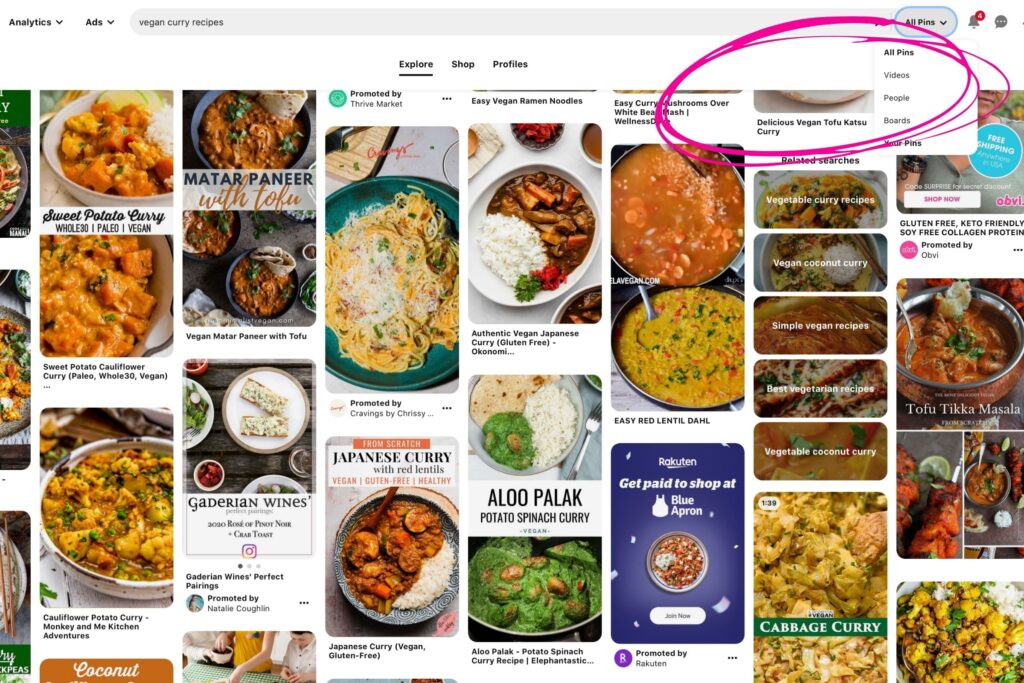


When you conduct a search this way, just be sure that the search bar is set to “All Pins” and not “Your Pins” before you conduct the search.
Look to Related Searches when Conducting Pinterest Keyword Research
Likewise, as you scroll through search results on Pinterest, you’ll come across grayed-out boxes that list search terms related to the search that you just conducted. If you click on any of those, you’ll find more ideas in those subsequent searches.
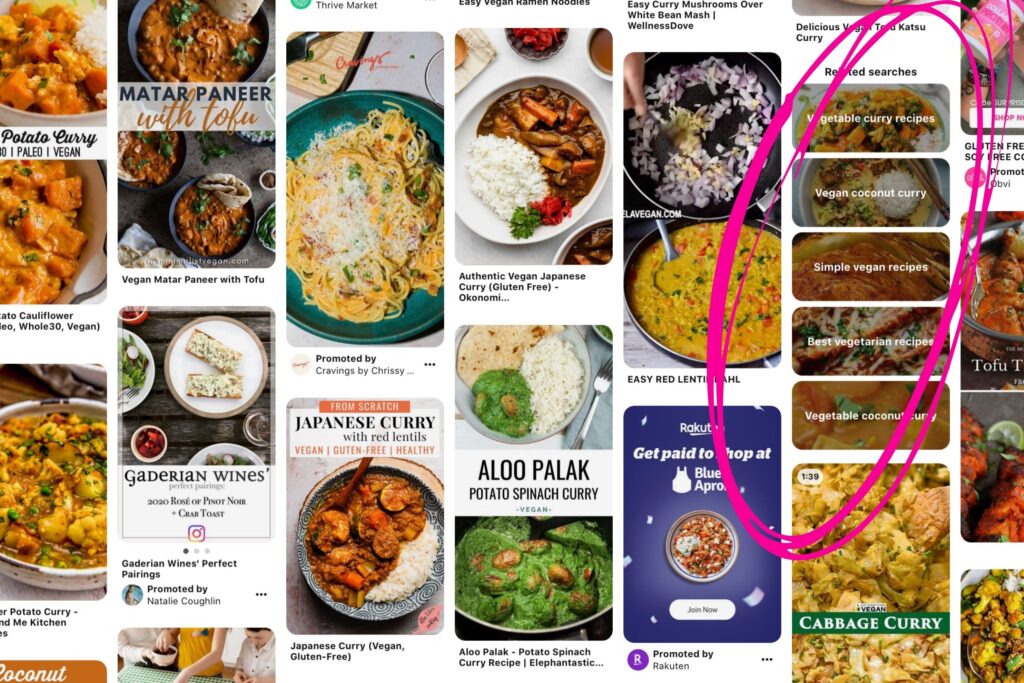
Use Pinterest Ads for Pinterest Keyword Research
If you have a Pinterest business account (and you should!), you’ll also have access to Pinterest Ads. I personally don’t pay to promote on Pinterest, but the Pinterest Ad creation tool is a good place to get Pinterest keyword ideas.
To use it, you have to enter the system and start the process of setting up an ad. This will unlock the keyword search feature and provide you with a list of potential Pinterest keywords. Here’s a short clip on how to do it:
Pinterest Keyword Research Tip: Follow the Trends!
Remember that Pinterest is an inspirational medium, so following trends is important. Pinterest users typically aren’t looking for a recipe or product for the exact moment that they’re on Pinterest. They’re likely in a planning phase. For example, perhaps they’re hosting a Superbowl party or planning a Thanksgiving meal and want to start thinking about the menu.
As such, it’s important that your Pins be timely. That means publishing Thanksgiving Pins in September, October and early November and not April, May and June. Or, if there’s a hot new trend, the time to jump on the bandwagon was yesterday.
Fortunately, identifying trends in the food space is pretty easy. Is everyone on Instagram talking about it? Then it’s likely trending on Pinterest too. You can also research trends on Pinterest through the Analytics drop-down menu. From there, you can see what topics people are searching in your niche.

How to Add Keywords to Pinterest
Now that we’ve talked about how Pinterest is structured and learned how to generate a list of potential Pinterest keywords, let’s talk about how to add keywords to Pinterest.
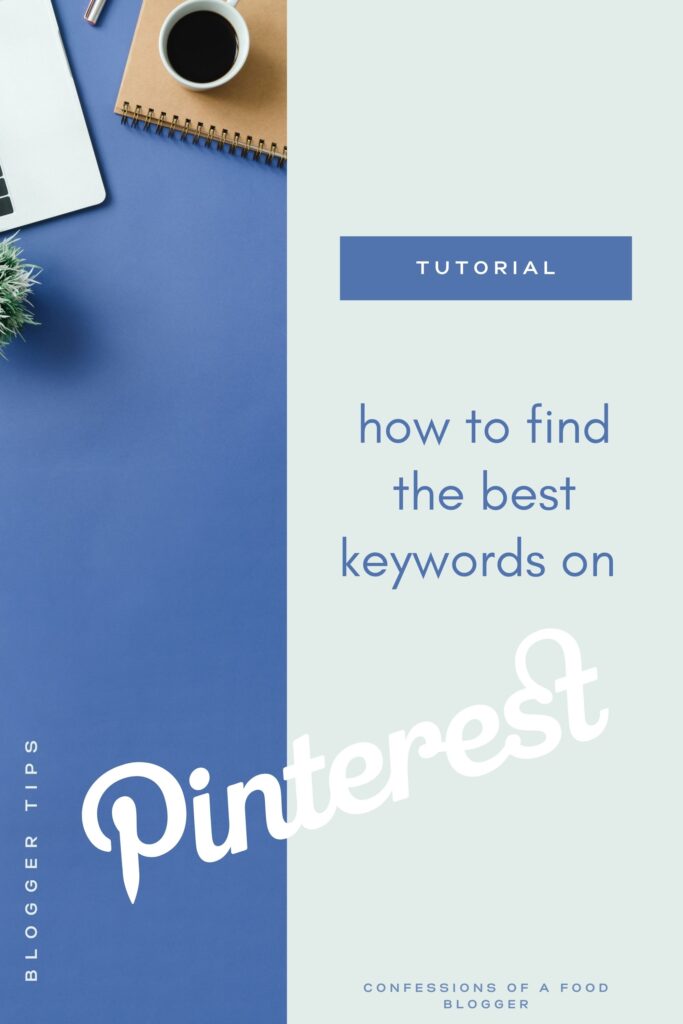
Broad is Better if You’re Writing Your Pinterest Bio… But Not Too Broad
As discussed, your Pinterest bio is where users will get a broad sense of what you’re Pinterest account is about. You’ll want to paint with broad strokes here, but not too broad. For example, at the highest level, the content on my food blog could be defined as recipes. Therefore, it might make sense to select recipes as a Pinterest keyword. But, while recipes is an accurate search term to define my brand, it’s probably not specific enough for me to gain any real traction on Pinterest — even at the Bio level.
After all, there are millions of recipes on the Pinterest. How would Pinterest ever know what distinguishes my recipes from the rest? And, even if Pinterest delivered my content to a Pinterest User who typed in the search term recipes, what is the likelihood that the user would be satisfied? What is that user wasn’t looking for a vegan recipe?
To avoid competing for overly broad search terms only to deliver a specific result to a general search, you’ll need to niche down. This means finding a specific niche within a general category that is still highly searched. For example, I would want to focus on vegan recipes over recipes in my Bio.
Get a Little More Specific When Creating Your Pinterest Boards
You’ll need to refine the degree of specificity as you work your way down the list of Pinterest’s parts. For a board title and corresponding board description, you’ll want to be more specific that vegan recipes. For example, I might create a board called Vegan Curry Recipes where I’ll feature only vegan-friendly curry recipes.

Your Pinterest presence should serve to inform Pinterest of your niche. Consistent structure from your bio description, to your board descriptions to your individual Pins will let Pinterest know what you’re about. This means that your Pinterest business account isn’t a great place to be saving off-topic Pins.
And Even More Specific When Creating Your Pinterest Pins
Within an individual Pin, you’ll have more opportunities to use your Pinterest keyword research, so you’ll want to refine your Pinterest keywords even further.
First, you’ll need to create a title for your Pin. Pinterest titles are limited to 100 characters and Pinterest recommends that you use at least 40 characters. Pinterest titles should be more specific than your Board title, but still to the point. For example, when I created my a red curry bowl with rice ramen noodles Pin for my Vegan Curry Recipes Board, I titled it Red Curry Vegan Ramen Noodle Bowl.
How to Write a Pinterest Pin Description: Getting Traction from Your Related Searches Research
Pin descriptions are where you’ll tell the user what your Pin is about. They’re limited to 500 characters and Pinterest recommends that you use at least 100 character.
Pinterest descriptions are a great place to include a variety of keywords related to your Pin title. This is where adjective and descriptors are helpful from an SEO standpoint. For example, my Red Curry Noodle Bowl is vegan, quick and healthy. It has ramen noodles, coconut milk, curry paste and shiitakes in it. It’s also also vegan bowl, a vegan soup and a vegan Thai recipe and can be eaten for lunch or dinner. See where I’m going with this?

Keep your descriptions conversational. Key phrases don’t necessarily have to appear in clusters. For example, you would say: This vegan green curry noodle bowl is easy and healthy – a tasty add to your favorite vegan recipes list; and not This easy green curry noodle bowl is a healthy green curry noodle bowl. Add this vegan green curry noodle bowl to your vegan recipe list.
Pinterest Keyword Research: Putting It All Together
I’ve now completed the research to address all three of the steps I described above. I’ve determined what keywords describe my brand/board/pin. I’ve also checked them against seasonality issues and thought about trending searches. Now it’s time to put this keyword research into action.
How to Write a Good Pinterest Bio
For your Pinterest bio, remember that you need to niche down. For example, I went from defining myself as a recipe creator in my before bio to a vegan recipe creator in my after bio. I also added some additional, board keywords to describe what my board is about while still maintaining a natural, conversational tone.
This is my BEFORE Pinterest bio

As you can see, my bio title defined me only as a recipe creator. Further, my bio description, while meant to be playful, didn’t really tell Pinterest or the Pinterest user what it is my Pinterest account or my blog is about.
This is my AFTER Pinterest bio
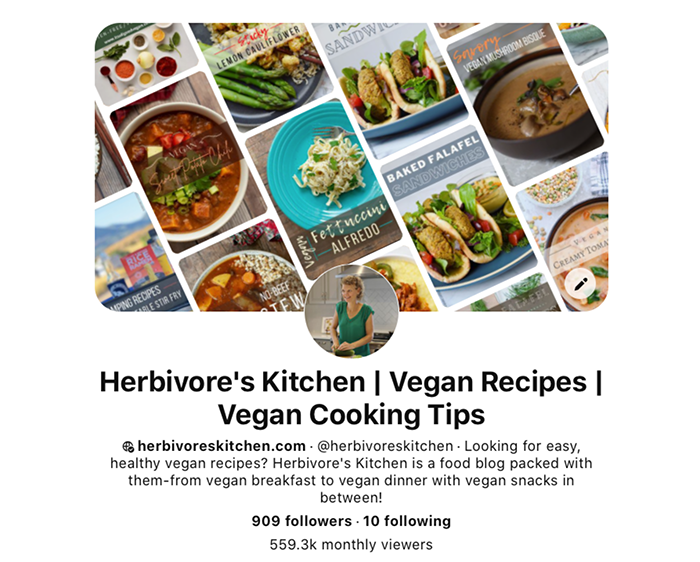
I switched my bio title to be more descriptive. I specified that my recipes are vegan and that I also offer vegan cooking tips. My bio description is refined to use relevant keywords as well. I double-down on the search term vegan recipes, but I also use descriptors like healthy, easy, breakfast, dinner and snacks.
How to Create a Good Pinterest Board
The same rules apply when creating a board, although I now know that my Boards need to be more specific than my bio. I want to capture an audience looking for a specific category of vegan recipes. In this case, I want a Pinterest user looking for a vegan curry recipe to find my board and the recipes on it.
Here’s a screen capture of my Easy Vegan Curry Recipes Board:
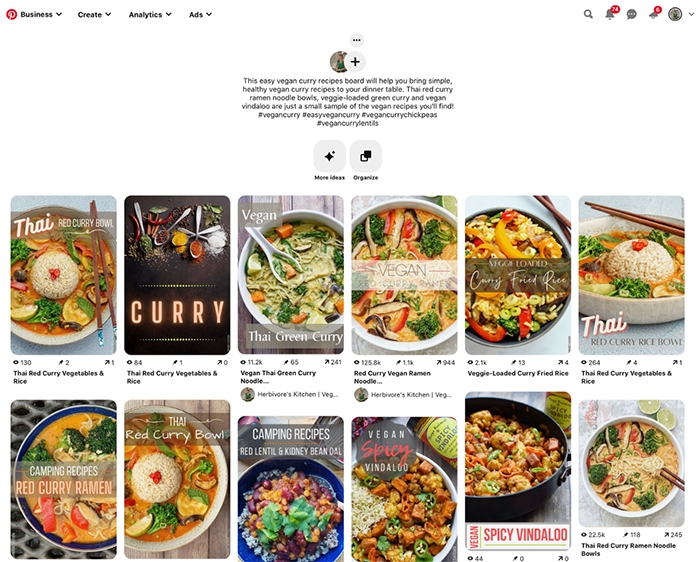
As you can see, I’ve specifically named this board Easy Vegan Curry Recipes. The description includes a variety of keywords that describe the types of recipes that can be found on the board. Recipes like Thai red curry, green curry and curry soup. There are also several descriptive terms like easy, healthy and simple. My research has told me that these are good, competitive keywords.

Oops! There are hashtags in my board description in the image above. As of 2021, Pinterest is no longer supporting hashtags. Use the characters to include another natural sentence with additional keywords instead.
How to Create an Effective Pinterest Pin
Finally, and perhaps most importantly, I want to create effective Pins. I know that Pins are the most detailed element, so I’ll want to include more refined keywords that describe the recipe within the Pin.
Here is the Pin I’ve created for my Vegan Red Curry Ramen Noodle Bowl:
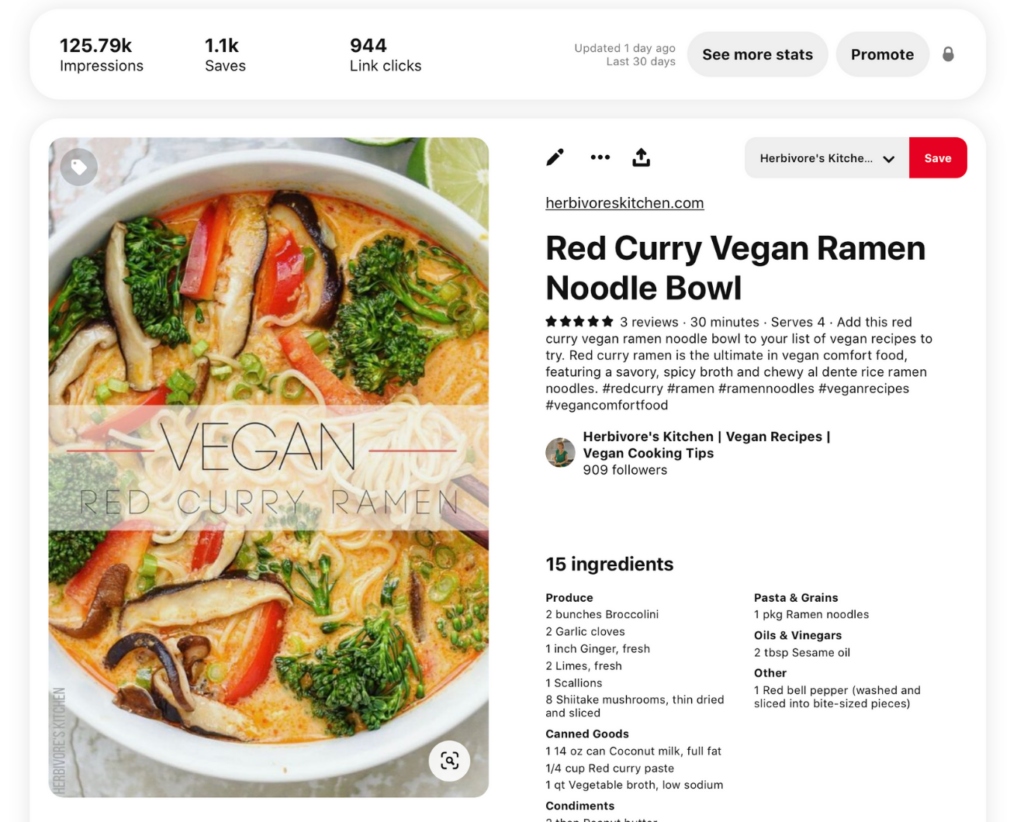
As you can see, I’ve gotten pretty specific with my keywords. I’ve included them in my Pin title as well as using them throughout my Pin description. And, even though the Pin description uses a lot of keywords, it still reads conversationally.
Most important, my Pin title and Pin description match the image and text on my Pin. This means my Pin is more likely to be shown to an audience that’s looking for this recipe or a similar recipe. If your keywords and phrases don’t match your image, then users won’t engage with your Pin. This, in turn, will inform Pinterest that you’re not accurately describing your images – the sign of a spammer. And you don’t want that!
Now That You Know How to Add Keywords to Pinterest…
Now that you know how to develop your bio, design engaging boards and create keyword-rich Pins, it’s time to get started! If questions arise, please feel free to reach out to me in the comments section below.
And, for those of you who might be new to Pinterest, here are three additional pieces of advice:
- Understand that Pinterest is a slow, but remarkably effective, burn. You just have to keep plugging away at adding new content to Pinterest.
- Pinterest is all about images! Creating good, attention-getting images takes some time, but it’s worth it! Consider using an image design site, like Canva.
- Have a Pinterest Plan. To date, Pinterest has been cracking down on spammy behavior – overzealously in many cases. Spread out your Pins, take your time sharing others’ Pins and build your account organically. Trying to force rapid growth may cause Pinterest to identify you as a spammer.
Be sure to check out my other Confessions of a Food Blogger posts to learn more about starting, marketing and making money from your food blog!
Happy pinning!
About Confessions of a Food Blogger
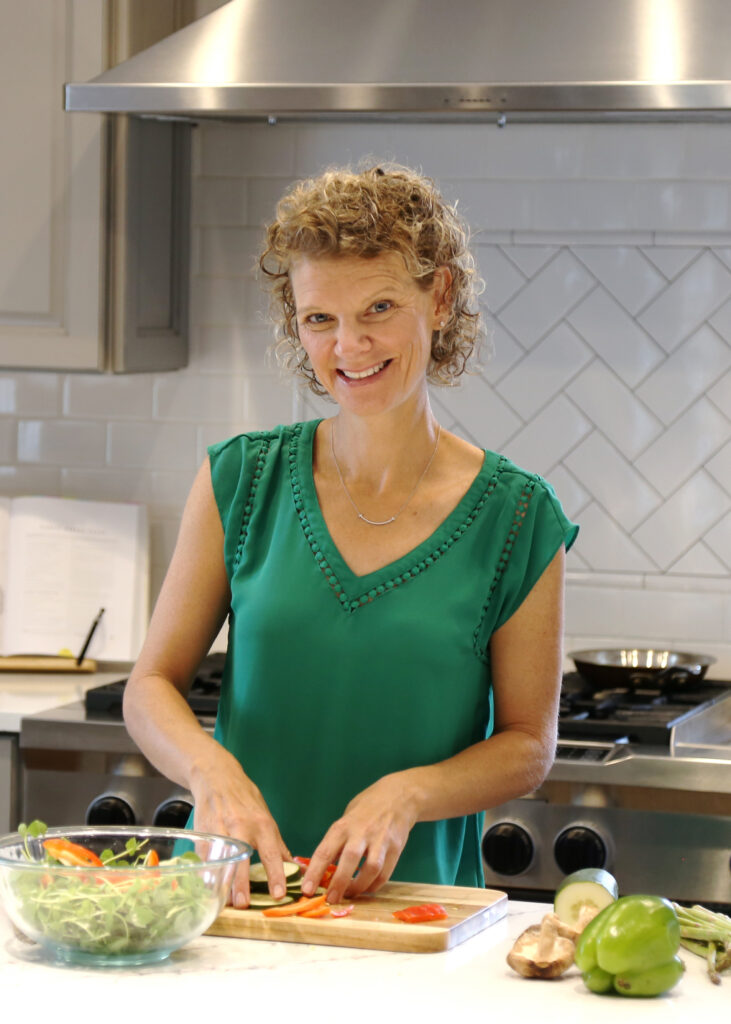
Kate Friedman is the creator of Herbivore’s Kitchen, a vegan food blog, and Confessions of a Food Blogger. Confessions of a Food Blogger is an informative resource for food bloggers (and, actually all bloggers) that provides helpful articles, online courses and tips and tricks for starting, building, marketing and managing a food blog.
